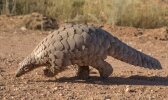
In the big picture of life, viruses are perfectly normal, and we’ve learned to live with all kinds of them; cold viruses, flu viruses, sexually transmitted viruses, and the list goes on. We have learned to accept them as part of the risk we face in living life.
And now there’s the spread of the coronavirus (COVID-19). Declared by the World Health Organization to be a pandemic, it has created a global ‘panic-demic’ unlike anything experienced by current generations.
Even though no one is running wild in the streets, many consider our ‘shut-down’ current state of affairs concerning COVID19 to be an over-reaction, a threat to our fundamental liberties, or perhaps even some kind of conspiracy created to cover up another more real threat.
It is important to note that a ‘pandemic’ only refers to a new virus affecting a high proportion of the population. It is not related to the severity of an illness, or to the number of fatalities associated with an illness.
Right now, the big question on most people’s minds is the question of whether government reactions to coronavirus around the world are an over-reaction that poses a more serious threat to society than COVID-19 itself. The economic and political consequences of government action, which affect everyone, even those who will not experience any symptoms or serious illness, are profound.
To better understand the current concerns our government officials have about COVID-19, it is worth reviewing a brief history of mankind’s experience with past pandemics. Most feared is a repeat of the so-called Spanish flu that killed millions globally during and following the First World War. But statistics relating to a given disease alone do not tell the whole story about how these viral pandemics can be destructive to societies.
Common to the vast majority of viral pandemics is the alarming fact that they originate in China. With respect to the coronavirus, this is again the case. So far, the most likely source of coronavirus has been traced to the so-called ‘wet markets’ that exist in China and throughout south-east Asia. In these crowded and unsanitary markets, wild animals from around the globe are kept alive in cages and enclosures to be sold for food and other purposes. More and more experts seem to be coming to the conclusion that the most trafficked wild animal in the world – the pangolin – appears to be the source of this particular viral variant.
Naturally, anxiety levels experienced throughout this crisis will become one of the additional symptoms related to COVID-19, or perhaps, simply related to the government actions being taken. Above all, people should not allow themselves to be consumed by anxiety or panic because of COVID-19 cases increasing daily – which they undoubtedly will.
It is quite possible that the COVID19 virus may have already been globally spread long before our awareness of the first deaths in Wuhan China. Does it really ‘spread rapidly’ or has it already been hiding within the population? After all, the discovery of a particular virus depends upon its being specifically identified as such. The perceived ‘rapid spread’ may only coincide with a more ‘rapid testing’ and identification period. It may simply be a statistical illusion.
At this point in time, there are simply too many outstanding unknowns and variable interpretations to draw any firm conclusions.
In the end, it will be up to each individual to decide whether or not government actions regarding COVID19 were an over-reaction, an under-reaction, or were Just Right.
If you found this presentation valuable please consider supporting us:
🧡 PayPal


Sorry, the comment form is closed at this time.